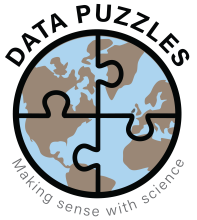To Reflect or Not to Reflect, That is the Question
The color of Earth's surface determines how much of the Sun's energy is reflected or absorbed, where lighter-colored surfaces are more reflective (higher albedo). In this Data Puzzle, students analyze authentic Arctic data to construct explanatory models for the following question, "How might the Arctic’s albedo be affected by the observed decline in sea ice?"
Why does this matter? Scientists know that lighter colored surfaces (e.g., white) have a higher albedo (more reflective) than darker colored surfaces (e.g., black) and predict that the decline in the light colored sea ice will cause the albedo of the Arctic to decrease as well. Scientists like Dr. Jen Kay (featured in this Data Puzzle) worry that if the albedo of the Arctic declines, energy that used to be reflected will be absorbed and lead to increased warming in the Arctic.
In this virtual workshop, we will review strategies for how to facilitate the To Reflect or Not to Reflect, That is the Question Data Puzzle in your middle and high school science classrooms. Participants will engage with the teaching materials (teacher guide, slide deck, student worksheet, and answer key) from both the teacher and student perspective and upon completion, be prepared to implement the Data Puzzle in their classroom.
Participants who complete and submit specified workshop tasks will receive a 3-hour PD certificate from the University of Colorado Boulder.
Explore this resource on the Data Puzzles website


